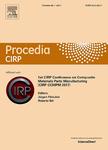版权所有:内蒙古大学图书馆 技术提供:维普资讯• 智图
内蒙古自治区呼和浩特市赛罕区大学西街235号 邮编: 010021

作者机构:Institute for Control Engineering of Machine Tools and Manufacturing Units University of Stuttgart Seidenstr. 36 D-70174 Stuttgart Germany Institute Parallel and Distributed Systems University of Stuttgart Universit” atsstr. 38 D-70569 Stuttgart Germany
出 版 物:《Procedia CIRP》
年 卷 期:2021年第100卷
页 面:451-456页
学科分类:12[管理学] 1201[管理学-管理科学与工程(可授管理学、工学学位)] 08[工学]
主 题:Co-Design Data Processing AutomationML IFC STEP CAD CAM
摘 要:The term co-design describes a collaborative design process, usually across the boundaries of individual areas. A major aspect, and often an obstacle in the implementation of the co-design approach, is the establishment of a centralized data management system. In the past, the data management concept has been approached from different perspectives. Current approaches usually are oriented along the process chain and thus reflect a unidirectional flow of information. Neither the information feedback nor the reaction to adjustments in upstream model steps is supported, which makes continuous collaboration more difficult and at best reduces the co-design approach for continuous data usage. This paper addresses these weaknesses while outlining an integrative data processing concept enabling co-design between the domains of construction and industrial prefabrication. Geometrical information generated during architectural design and construction planning is reused for the production of components, manufacturing-related design adjustments are transferred back into the domain of construction. Changes throughout the entire process are centrally recorded. To ensure independence from the software tools used and to consider their great diversity, data exchange is largely based on standards, namely industry foundation classes and the standard for the exchange of product model data. In order to counteract the sequential processing according to a waterfall model and to support the co-design approach, the industrial prefabrication toolchain, consisting of computer-aided manufacturing software and downstream postprocessors, is largely automated, so that reprocessing of a workpiece for minor geometric adjustments no longer requires any interaction of the production planner.